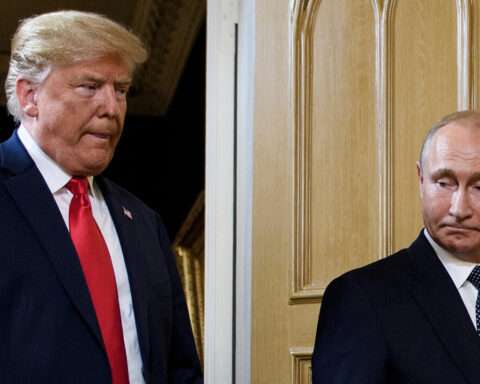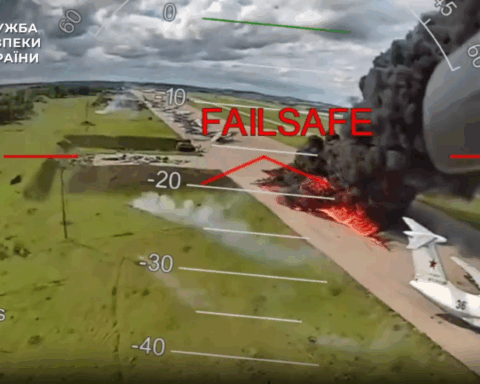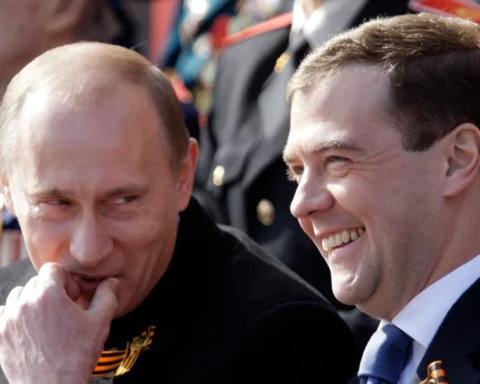By all accounts, Russia’s war on Ukraine isn’t going well.
The estimated death toll among Russian soldiers is about the same as Soviet losses for the entire 10-year Afghan war. Russian forces have failed to achieve strategic goals such as taking Ukraine’s capital, Kyiv, or the major port city of Mariupol. More than two-thirds of Russia’s battalion tactical groups — its basic fighting units — have been deployed. Its forces have been plagued by major interoperability and communication failures.
Another big item on the list of problems: satellites — there are too few of them, and too few with high-quality capabilities.
According to experts and open-source information compiled by RFE/RL, Russia has long been saddled with a small and inadequate fleet of communications and surveillance satellites that in many cases rely on either outdated technology or imported parts that are now harder to come by due to Western sanctions.
Ukraine has no satellite fleet of its own. But it has benefited greatly not only from the unprecedented amount of weaponry and military equipment that the United States has supplied, but also from an unprecedented amount of intelligence, including real-time data on Russian troop movements.
It’s unclear if that includes high-resolution imagery from spy satellites.
But in any case, a proliferation of Western technological developments has resulted in an explosion of high-quality, real-time satellite imagery available not only to military intelligence but also private, commercial companies. Russia has virtually none of that.
“In principle, Russia is already practically blind in orbit, ” said Bart Hendrix, a Brussels-based analyst and expert on Soviet and Russian space programs.
According to a database maintained by the Union of Concerned Scientists, a respected U.S. nongovernmental organization, Russia currently has around 100 military or dual-purpose satellites. Nineteen of them are classified as remote sensing satellites, with technology allowing either optical photography or radio signal surveillance. The others serve other purposes.
Resolution Matters
Russia has two optical reconnaissance satellites in orbit now, called Persona, Hendrix said, but they were launched between seven and nine years ago, meaning they may be near the end of their working life.
Adding further to the problem: The maximum resolution of the Persona satellites is believed to be 50 centimeters per pixel, Hendrix said.
By comparison, the best American spy satellites, called Keyhole, are estimated to have a resolution of around 5 centimeters per pixel. At that resolution, the letter “V” which is being painted on the roofs of Russian military vehicles operating in Ukraine would be easily and clearly visible from the typical altitude where a spy satellite was orbiting.

Commercial satellite companies like Maxar and Planet typically have a maximum resolution of around 15 centimeters.
“The Americans have at least five Keyhole-12 satellites, the Italians, the French and the Spaniards have their own satellites, there are an order of magnitude more,” Hendrix told RFE/RL.
Russia has also lagged behind in building and deploying remote-sensing satellites whose radars can see through cloud cover, unlike optical satellites.
According to the Union of Concerned Scientists’ database, Russia has only one confirmed radar satellite in operation, called Kondor. It was launched in 2014, and with an expected lifespan of five years, it may have already ceased to be operational.
In February, Russia’s space forces launched another satellite, dubbed Kosmos-2553 or Neutron. Little is known about its purpose or capabilities, though it was built by Mashinostroyeniye, a Moscow military research institute which specializes specifically in radar-sensing satellites.
“If Neutron is a radar satellite, then this is the first such launch in almost 10 years,” Hendrix said.
“In terms of radar satellites, Russia also lags behind NATO by an order of magnitude,” he said.
GPS, GLONASS
The world’s most dominant system for positioning technology is the U.S.-built platform known simply as the Global Positioning System, or GPS.
The technology is publicly available, and widely used in everything from navigation systems to handheld smartphones. But because it is owned and operated by the U.S. government, Russia has long chafed at the system, and sought to build an alternative, known as GLONASS.
But for the GLONASS network to be fully functional, it needs 24 satellites. Russia currently has only 23 deployed, and several of them are nearing the end of their lifespan in orbit.

Russia has struggled to build and launch new units for the GLONASS network in part because of the Western sanctions imposed on Moscow for its seizure of Ukraine’s Crimean Peninsula in 2014.
Experts said up to 90 percent of the electronics — which need to be resistant to space radiation that can quickly destroy sensitive equipment — used in the next generation GLONASS K-1 satellites are imported. Russia has tried to design and manufacture homegrown replacement parts, but the result was a satellite that was twice as heavy as the previous models and it has yet to be launched into orbit.
“Half of the GLONASS satellites can fall out [of orbit] at any moment. In principle, the failure of the first three or four will only affect the accuracy in a certain area. But for normal coverage of the territory of Russia, about 18 units are needed,” said one expert who worked in Russian and European aerospace industry and asked to remain anonymous to discuss sensitive industry matters.
“If the launch trend is not fundamentally changed, the GLONASS system will fall apart over the next few years,” he said.
Further complicating matters: Russia’s next generation of military launch rockets — the heavy-lift Angara 5 — has been plagued by problems. It has been used in only three launches since 2014.
Data Overload
Another problem is data processing, according to Pavel Podvig, an expert on Russian armed forces and a senior fellow at the UN Institute for Disarmament Research in Geneva.
“It’s one thing to have satellites, it’s another thing to be able to use them. You need a system that will allow you to quickly transfer information from satellites to the right people who will process it and transfer it to people responsible, for example, for target designation,” he said.
“The fact that Russia has some satellites still flying does not mean that such a system exists, and if it exists, in the case of Russia it is difficult to say how good or bad it is,” Podvig added.
“Even the Americans aren’t able to cope with this task,” he said. “I don’t see any evidence that Russia is successfully solving this task in the war with Ukraine.”






